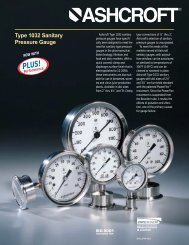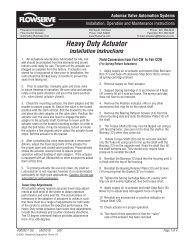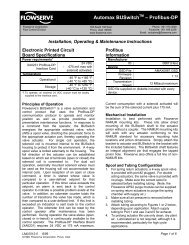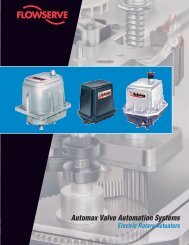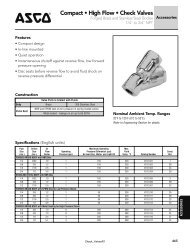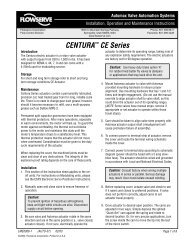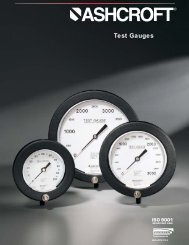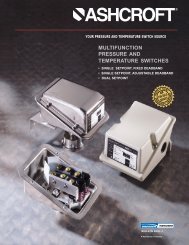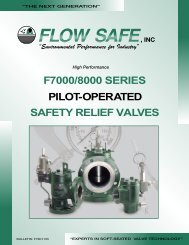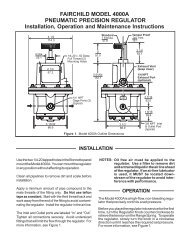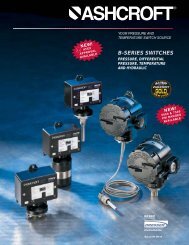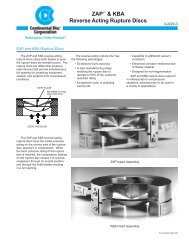Multi-turn actuators - Tri-State Technical Sales Corp.
Multi-turn actuators - Tri-State Technical Sales Corp.
Multi-turn actuators - Tri-State Technical Sales Corp.
Create successful ePaper yourself
Turn your PDF publications into a flip-book with our unique Google optimized e-Paper software.
Feedback signals<br />
Feedback<br />
Valve end positions<br />
Valve position<br />
Intermediate positions, e.g. for<br />
starting up a pump when<br />
reaching a particular valve<br />
position<br />
Actuator/valve is operated<br />
Fault (excessive temperature)<br />
Fault (torque fault)<br />
Actuators without integral controls (AUMA NORM)<br />
When using tandem switches instead of the common single switches, the signals can be fed back twice<br />
as galvanically isolated signals.<br />
Limit and torque switch signals have to be evaluated within the external controls. When processing the signals it<br />
has to be considered whether the actuator is limit or torque seated in the end positions.<br />
For limit seating, the end position signal is generated by evaluating the limit switch signals.<br />
For torque seating, the end position feedback signal is generated by combining limit and torque switch signals.<br />
An optional position transmitter provides the external controls with the valve position either as a voltage signal<br />
or as a 0/4 – 20 mA current signal.<br />
As an option, the actuator contains two additional intermediate position switches, one for each direction<br />
(DUO limit switching)<br />
Can be provided by a blinker switch which is included in the basic version of open-close <strong>actuators</strong> and optionally<br />
available for modulating <strong>actuators</strong>.<br />
The higher level controls have to monitor the thermoswitches installed in the actuator motor. <strong>Tri</strong>pping of the<br />
thermoswitches has to switch off the actuator immediately to prevent it from being damaged. Consequently, the<br />
external controls have to generate a fault signal to be able to detect and eliminate a fault.<br />
<strong>Tri</strong>pping of a torque switch in mid-travel has to lead to immediate switching off of the actuator. Torque switch<br />
tripping in one of the end positions can also be part of normal operation. This is identified by the limit switch<br />
tripping at the same time. In all other cases, the tripping of the torque switch is to be interpreted as a fault. To<br />
be able to identify and eliminate a fault, the external controls have to provide a fault signal.<br />
Feedback signals for <strong>actuators</strong> with integral controls<br />
Integral controls have the following advantages:<br />
■<br />
■<br />
■<br />
For <strong>actuators</strong> with integral controls, the above mentioned<br />
feedback signals are directly made available. This reduces<br />
the number of signals to be led to the higher level<br />
controls.<br />
By means of enhanced diagnostic functions, the AUMATIC<br />
provides a number of other feedback signals which can be<br />
used if required.<br />
The controls have binary and analogue outputs or alternatively<br />
a fieldbus interface which can be used to transmit<br />
the signals to the DCS.<br />
Further information on these actuator types is available in<br />
the brochures:<br />
■<br />
■<br />
Product description<br />
Actuator controls AUMA MATIC<br />
Product description<br />
Actuator controls AUMATIC<br />
| 19



